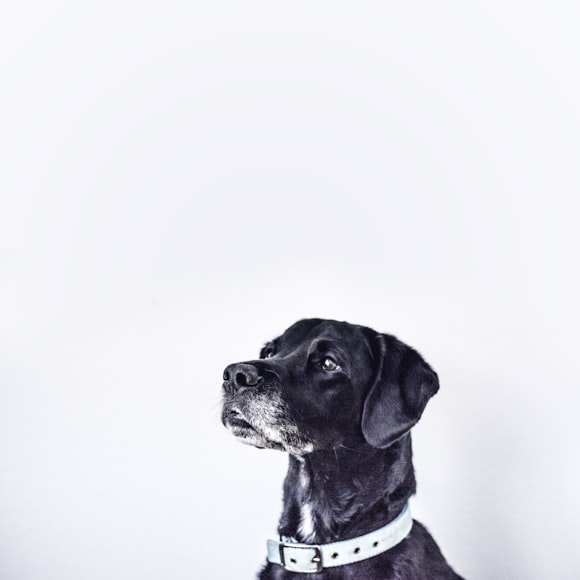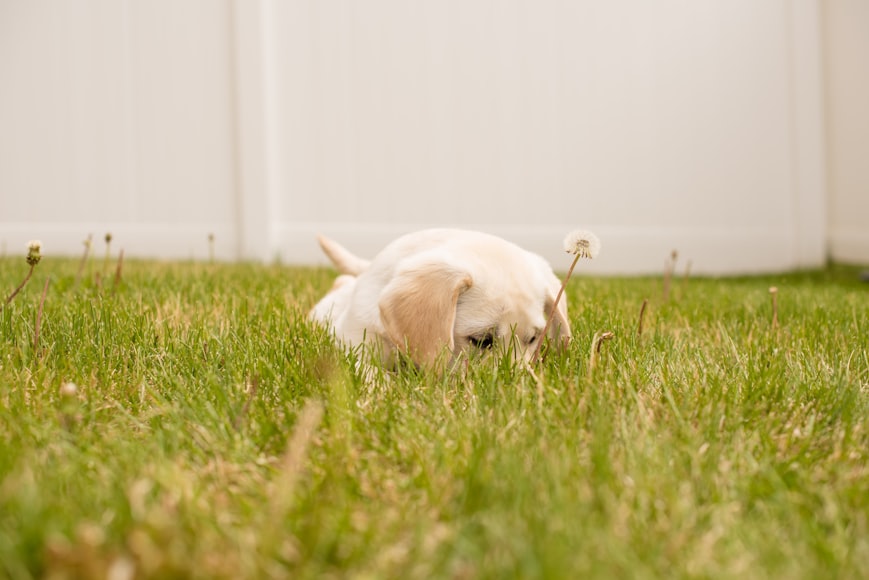I. Introduction

I. Introduction
For dogs, socialization is crucial for their overall well-being and happiness. When properly socialized, dogs learn how to interact positively with other animals and humans, reducing anxiety, aggression, and fear. This article provides a comprehensive overview of how to train your dog for improved socialization with other pets.
A. Importance of Proper Socialization
Socialization is the process of exposing dogs to a variety of positive experiences with other animals, people, and environments during their early development. It helps them:
- Understand and follow social cues
- Develop confidence and adaptability
- Reduce fear or aggression towards other pets
- Improve overall communication and interaction skills
B. Benefits of Socializing with Other Pets
Socializing dogs with other pets offers numerous benefits, including:
- Reduced aggression: Exposing dogs to other pets helps them learn appropriate play behaviors and avoid negative interactions.
- Improved communication: Socialization allows dogs to communicate effectively with other animals, reducing misunderstandings and conflicts.
- Increased well-being: Positive social interactions provide mental and emotional stimulation, enriching the lives of dogs.
- Prevention of isolation: Properly socialized dogs are more likely to enjoy the company of other pets, reducing loneliness and isolation.
- Better adaptability: Dogs who are socialized with other animals are better equipped to handle new situations and environments involving other pets.
II. Establishing a Safe and Controlled Environment

II. Establishing a Safe and Controlled Environment
Ensuring a safe and controlled environment is crucial for successful dog socialization. By following these steps, you can minimize distractions and create a conducive atmosphere for your pet’s growth.
A. Choosing a Neutral Location:
- Select a location where neither dog feels threatened or territorial.
- Avoid places where your dog may have had negative experiences with other animals.
- Consider parks, open fields, or quiet streets with minimal foot traffic.
B. Using Positive Reinforcement:
- Reward both dogs for calm and friendly behavior. Use high-value treats, praise, or play as rewards.
- Avoid punishment. This will only create fear and anxiety in your dog.
- Associate socialization with positive experiences. Make it fun by incorporating games and play into the sessions.
- Start small and gradually increase exposure. Introduce your dogs to each other for short periods of time and gradually increase the duration as they become more comfortable.
Additional Tips:
- Use a leash and harness. This provides control and prevents the dogs from getting too close too quickly.
- Keep an eye on both dogs. Monitor their body language and intervene if any signs of tension arise.
- Don’t force interactions. Allow the dogs to take the lead and interact at their own pace.
- Be patient and consistent. Socialization takes time and repetition. Don’t get discouraged if progress isn’t immediate.
- Seek professional help if needed. If you encounter any challenges or your dog exhibits persistent fear or aggression, consult a certified dog trainer or animal behaviorist.
Remember, every dog is different, and the pace of socialization may vary. By establishing a safe and controlled environment, using positive reinforcement, and following these guidelines, you can help your dog develop the necessary social skills to interact positively with other pets.
III. Gradual Exposure and Desensitization

Socialization is crucial for dogs to develop harmonious relationships with other animals. It helps them feel confident, reduce anxiety, and prevent aggressive behaviors. Gradual exposure and desensitization are effective methods to enhance your dog’s socialization skills.
III. Gradual Exposure and Desensitization
This technique involves progressively exposing your dog to other pets in a controlled environment while minimizing their reactions.
A. Starting with Short Sessions
Begin by having brief encounters with other animals. Keep the interactions short, around 5-10 minutes, to prevent overwhelming your dog. Gradually increase the duration of exposure as they become more comfortable.
B. Allowing Dogs to Approach Slowly
Allow other dogs to approach your dog slowly and at a safe distance. Initially, keep a “buffer zone” between them to minimize potential conflicts. As your dog becomes more relaxed, gradually reduce the distance and allow for sniffs and gentle interactions.
Tips for Gradual Exposure and Desensitization:
- Stay calm and positive: Your dog will sense your emotions, so stay relaxed and reassuring.
- Use treats: Provide your dog with high-value treats during socialization sessions to help them associate positive experiences with other animals.
- Go to neutral areas: Avoid exposing your dog to other pets in your own home or on their territory, which can trigger territorial behaviors.
- Respect your dog’s limits: If your dog shows signs of fear or discomfort, end the session and try again later.
- Be patient and consistent: Socialization takes time and effort. Be patient with your dog and continue exposing them to other pets regularly.
Conclusion:
Gradual exposure and desensitization can significantly improve your dog’s socialization skills with other animals. By starting with short sessions and allowing dogs to approach slowly, you can help your dog overcome their fears and foster healthy relationships with their furry counterparts. Remember to stay calm, positive, and respect your dog’s limits throughout the process.
IV. Interacting with Other Dogs

A. Teaching Proper Greeting Behaviors
Socializing dogs with other dogs requires establishing appropriate greeting behaviors to prevent conflicts and ensure positive interactions. Teach your dog the following:
- Calm approach: Train your dog to approach other dogs calmly and slowly, without lunging or barking. Use a leash to control their movement.
- Respectful distance: Teach your dog to maintain a respectful distance from other dogs, giving them ample personal space.
- Neutral body language: Encourage your dog to exhibit relaxed body language, such as a loose, wagging tail, and avoid tense or aggressive stances.
B. Monitoring and Supervising Interactions
When introducing your dog to other dogs, it’s crucial to monitor and supervise their interactions closely. Here are some tips:
- Gradual introductions: Start by introducing your dog to calm and friendly dogs in a controlled environment, such as a dog park or a friend’s backyard.
- Observe body language: Pay attention to both dogs’ body language for any signs of stress, anxiety, or aggression. If either dog appears uncomfortable, separate them immediately.
- Set clear boundaries: Establish clear boundaries for both dogs, such as preventing them from rushing up to each other or engaging in play that could escalate.
- Use a leash: Always keep your dog on a leash when meeting other dogs until you are confident in their ability to interact safely.
- Respect the other dog’s boundaries: Teach your dog to respect the boundaries of other dogs, even if they are not exhibiting aggressive behavior.
Remember, socializing your dog with other pets requires patience and consistency. By teaching proper greeting behaviors and carefully monitoring interactions, you can help your furry friend build positive and healthy relationships with other animals.
V. Socializing with Other Pets

Socializing your dog is crucial for their overall well-being and happiness. A well-socialized dog is more likely to be friendly and comfortable around other animals and people, reducing stress and potential behavioral problems.
A. Introducing Dogs to Cats and Other Animals
- Start Slowly: Begin by introducing your dog to other pets in a controlled environment, such as a neutral park or your backyard.
- Supervise Interactions: Keep a close eye on both animals and intervene immediately if any signs of aggression or fear arise.
- Use Positive Reinforcement: Reward your dog with treats or praise when they show calm and friendly behavior towards the other animal.
- Respect Boundaries: Allow your pets to approach each other at their own pace and respect their limitations.
B. Providing a Safe Space for All Pets
- Separate Sleeping Areas: Give each pet their own designated bed or crate to avoid territorial disputes.
- Designated Feeding Zones: Feed your pets in different areas to prevent competition for food.
- Provide Vertical Space: Cats often feel more secure when they have access to elevated spaces, such as cat trees or shelves.
- Safe Retreats: Create quiet, secluded areas where each pet can go to de-stress if needed.
Additional Tips for Socialization
- Start Early: Begin socializing your dog as a puppy to establish positive associations with other animals.
- Use Playdates: Supervised playdates with other friendly dogs can help your pet build confidence and learn social cues.
- Consider Obedience Training: Training your dog to obey basic commands, such as “sit” and “stay,” can give you control in social situations.
- Be Patient: Socialization takes time and consistency. Don’t get discouraged if your dog shows fear or aggression initially.
- Seek Professional Help: If you encounter any significant challenges socializing your dog, do not hesitate to consult with a certified dog trainer or veterinarian.
By following these guidelines, you can help your dog develop healthy relationships with other pets, reducing stress and promoting a harmonious household. Remember, socialization is an ongoing process that requires patience, consistency, and positive reinforcement.
VI. Teaching Obedience Commands
Socializing your dog effectively involves not just gradual exposure to other pets but also training them to respond appropriately in these interactions. Obedience commands play a crucial role in shaping their behavior and promoting harmonious relationships.
A. Using Commands Like “Stay” and “Leave It”
- “Stay”: Teach your dog to remain in a seated or lying position until released, even when faced with distractions. This command helps keep your dog under control and prevents them from approaching other pets impulsively.
- “Leave It”: This command instructs your dog to ignore specific objects or situations. It’s especially useful for redirecting their attention away from other pets they may be fixated on.
B. Reinforcing Calm and Appropriate Behavior
- Associate Commands with Rewards: Reward your dog with treats or praise when they execute these commands correctly. This positive reinforcement will encourage them to repeat the desired behavior.
- Practice in Controlled Environments: Start practicing these commands in a calm and controlled setting, such as your home. Gradually increase the level of distractions as your dog becomes more comfortable.
- Socialize with Confidence: Once your dog has mastered these basic commands, practice them in real-life socialization situations with other pets. This will help them apply their skills and build confidence in interacting with them.
Remember to remain patient and consistent during training. With regular practice and positive reinforcement, your dog will learn to obey commands and respond appropriately in social interactions, leading to improved socialization and a harmonious home environment for all pets.
VII. Managing Potential Aggression
A. Identifying Triggers
Understanding what sets off your dog’s aggression is crucial for effective management. Pay attention to their body language and environment to identify potential triggers, such as:
- Other animals
- People (certain ages, genders, or appearances)
- Loud noises
- Certain objects or situations
B. Teaching Dogs to Redirect Aggression
Once triggers are identified, it’s essential to teach your dog alternative behaviors to redirect their aggression. This involves positive reinforcement and gradual exposure:
- Positive Reinforcement: When your dog interacts calmly with another animal or person, reward them heavily with treats, praise, or playtime.
- Gradual Exposure: Start by introducing your dog to a low-level trigger in a controlled environment. Gradually increase the intensity and duration of the exposure as they progress.
- Teaching Alternative Behaviors: Train your dog commands such as “leave it,” “come,” or “sit” to interrupt unwanted behaviors and redirect their energy.
Additional Tips for Managing Aggression:
- Seek Professional Help: If your dog exhibits severe or unpredictable aggression, consult with a certified animal behaviorist or veterinarian.
- Use Muzzles or Leashes: When necessary, use a muzzle or leash to protect others and give your dog a sense of safety.
- Avoid Punishment: Punishment can worsen aggression by creating fear and anxiety.
- Exercise and Mental Stimulation: Provide ample exercise and mental stimulation to reduce pent-up energy and frustration.
- Create Safe Spaces: Designate safe spaces in your home where your dog can retreat and feel secure when feeling overwhelmed.
- Be Patient and Consistent: Training an aggressive dog takes time and patience. Stay consistent with your approach and avoid setbacks.
Remember, managing potential aggression requires a comprehensive approach that includes identifying triggers, teaching redirection, seeking professional help when needed, and providing a supportive and controlled environment for your dog.
VIII. Patience and Consistency
Socializing your dog with other pets requires immense patience and unwavering consistency. Understanding the significance of these virtues is crucial for achieving successful outcomes.
A. Importance of a Positive and Patient Approach
When interacting with unfamiliar animals, dogs may exhibit fear, aggression, or overexcitement. It’s essential to approach these situations with patience and empathy. Allow your dog time to adjust gradually, providing positive reinforcement and avoiding punishment. Avoid rushing the process or overwhelming your pet with too many encounters at once.
B. Setting Realistic Goals
Socialization is a gradual process that cannot be achieved overnight. Set realistic goals for your dog’s progress and celebrate every milestone. Embrace small, positive interactions rather than aiming for perfection. Remember that progress may not always be linear, and setbacks are part of the journey.
Tips for Maintaining Patience and Consistency:
- Stay calm and confident: Dogs mirror their owners’ emotions. Stay positive and calm during socialization sessions to reassure your pet.
- Start slowly: Introduce unfamiliar pets in a controlled environment, such as at a dog park or in a quiet neighborhood. Begin with brief, supervised interactions and gradually increase the duration and complexity of encounters.
- Use positive reinforcement: Reward your dog for calm and appropriate behavior around other pets. This may include treats, praise, or playtime.
- Avoid punishment: Punishing your dog for negative reactions towards other pets will only worsen the situation. Focus on positive reinforcement and redirecting unwanted behaviors.
- Seek professional help: If you encounter significant challenges in socializing your dog, do not hesitate to consult a certified professional trainer or veterinary behaviorist. They can provide expert guidance and support tailored to your pet’s specific needs.
Remember, socialization is a journey that requires patience, consistency, and a positive attitude. By embracing these virtues, you will create a strong foundation for your dog’s well-being and harmonious relationships with other pets.
IX. Ongoing Maintenance and Support
Maintaining and improving your pet’s socialization skills is an ongoing process that requires consistent effort and support. Here are two crucial aspects to consider:
A. Providing Opportunities for Regular Socialization
- Structured playgroups: Enrolling your pet in organized playgroups at designated dog parks or training centers allows them to interact with other pets in a controlled environment under supervision.
- Social walks: Take your pet on regular walks in areas where they encounter other pets, both on and off leash. This provides opportunities for socialization while practicing obedience and leash manners.
- Rotating playmates: Introduce your pet to new animals gradually and in supervised settings. Avoid overwhelming them with sudden encounters or large groups.
- Pet-friendly outings: Attend social events such as pet expo or parades where your pet can interact with various other animals and humans.
B. Seeking Professional Help if Needed
If you encounter difficulties socializing your pet despite consistent efforts, it’s essential to seek professional assistance. A qualified animal behaviorist or veterinarian can:
- Assess your pet’s behavior: They can identify underlying factors that may hinder socialization, such as anxiety, aggression, or fear.
- Develop a tailored training plan: Based on your pet’s individual needs, the professional will create a customized training and socialization program.
- Provide guidance and support: They will offer ongoing advice and support to ensure you and your pet succeed in the socialization process.
By providing regular socialization opportunities and seeking professional help when necessary, you can create a positive and enriching social environment for your pet, fostering harmonious interactions with other animals throughout their lives.


















